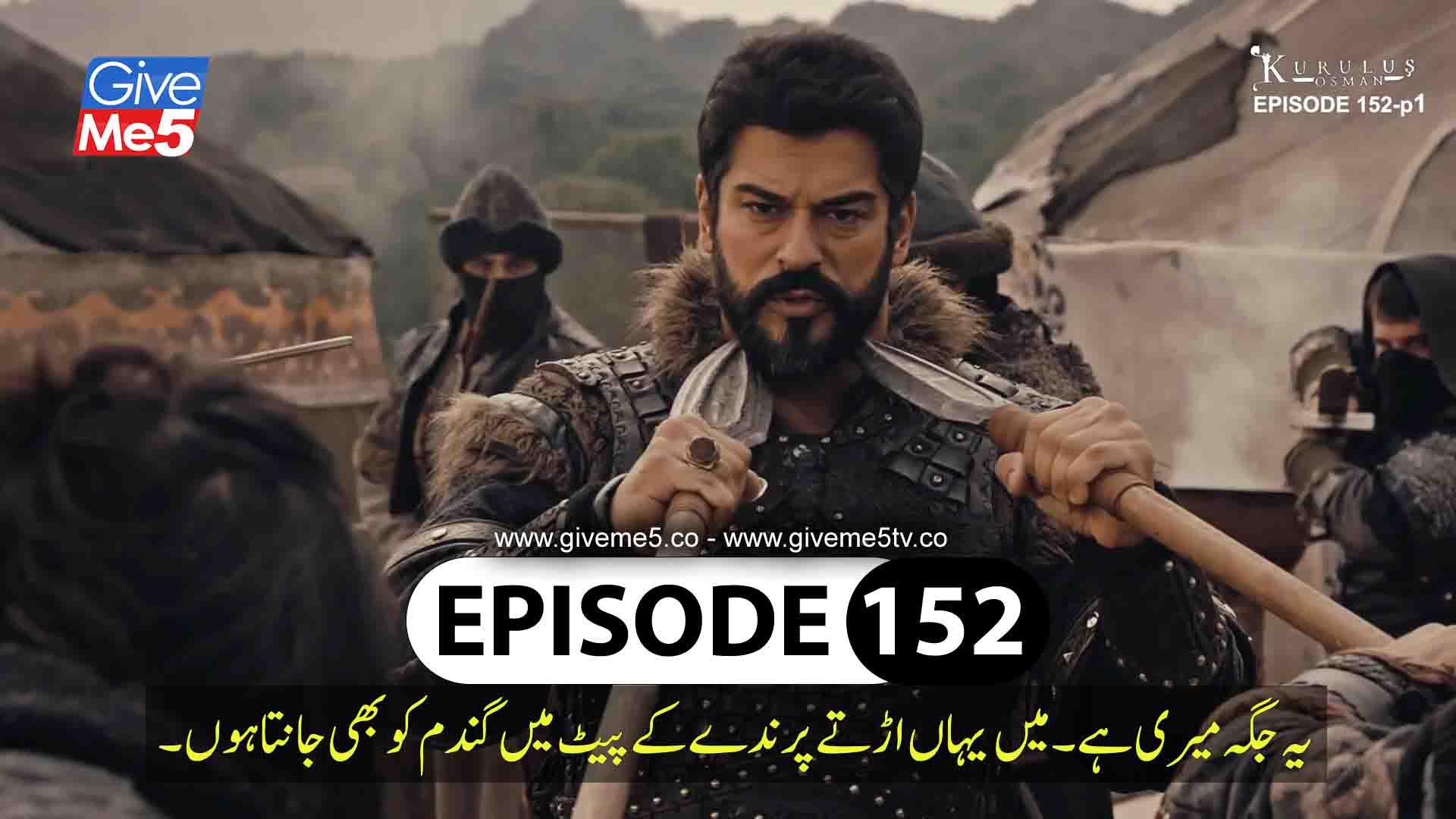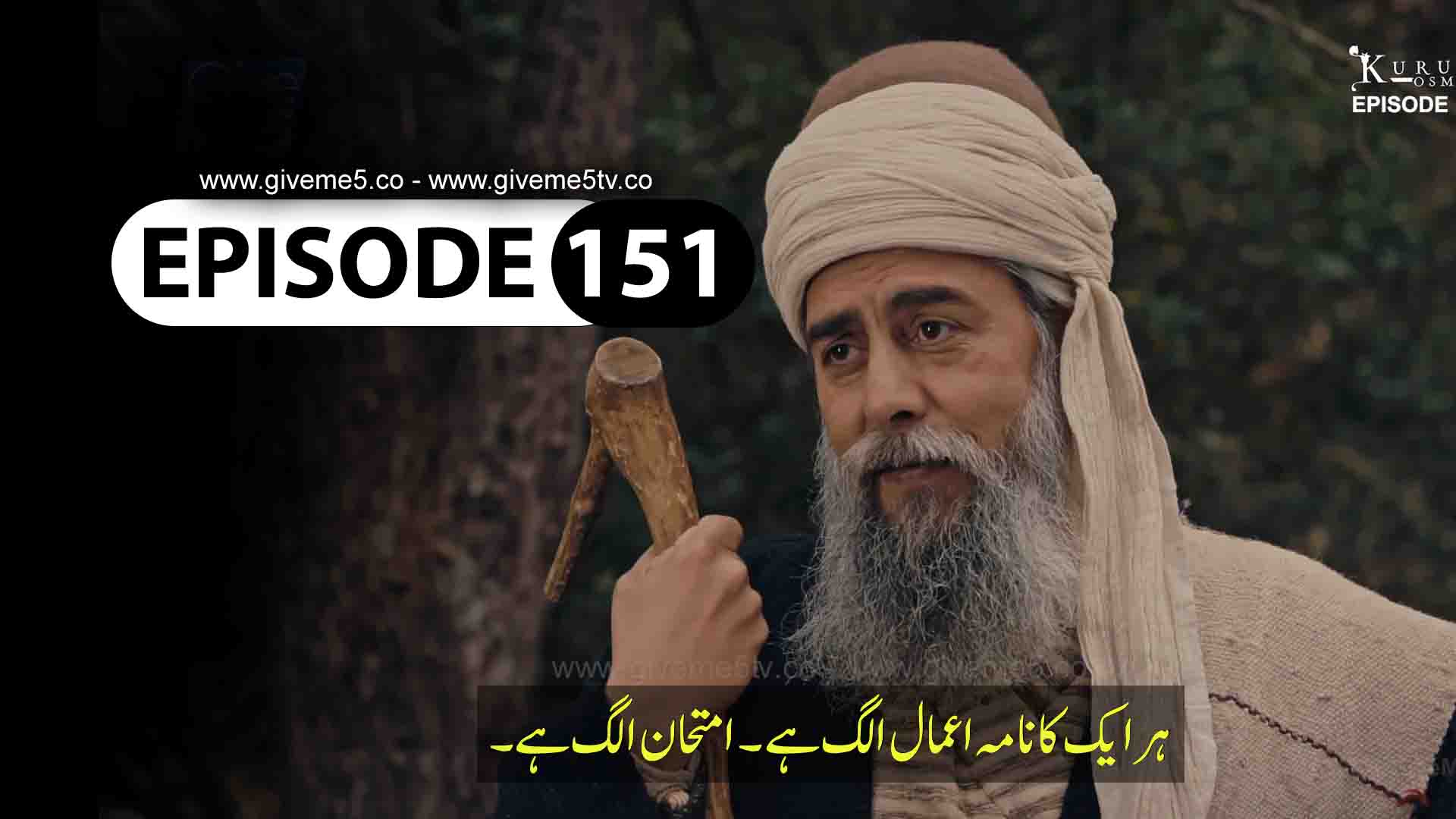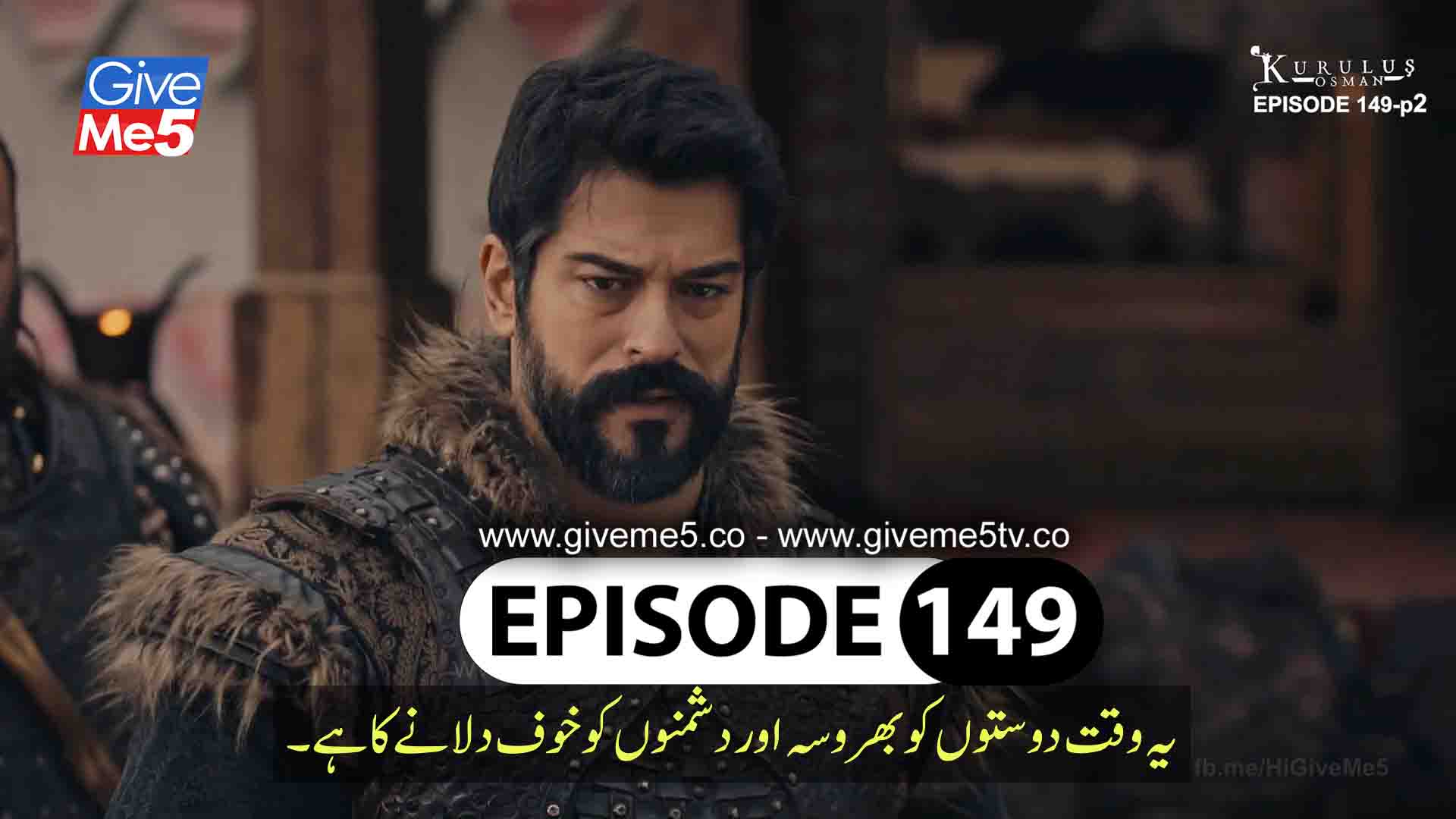This is Episode No 155(25) of Kurulus Osman and Episode No 25 of Season 5 of Kurulus Osman with Urdu Subtitles by GiveMe5.
Imran Tegin’s death by Osman Bey marked a significant turning point in the trajectory of the Ottoman Empire, leading to a series of events that shaped the empire’s future. To delve into this topic comprehensively, it’s important to explore the context of Imran Tegin’s role, the circumstances surrounding his death, and the aftermath for Osman Bey and the Ottoman Empire.
mran Tegin and His Role:
Imran Tegin was a prominent figure within the Ottoman Empire, known for his military prowess and strategic acumen. He held a key position within the empire’s hierarchy, commanding respect and loyalty from many. His leadership and contributions were crucial in expanding the empire’s territories and influence.
Imran Tegin’s Death by Osman Bey:
The circumstances of Imran Tegin’s death by Osman Bey are shrouded in historical accounts that vary in detail and perspective. Some narratives suggest that it was a result of a power struggle or political maneuvering within the empire, while others depict it as a confrontation rooted in personal rivalry or conflicting ambitions.
Regardless of the specifics, Imran Tegin’s death had far-reaching consequences. It created a vacuum in leadership and sparked internal tensions within the empire, as factions vied for power and influence in the absence of a strong central authority.
Aftermath for Osman Bey and the Ottoman Empire:
Following Imran Tegin’s death, Osman Bey faced numerous challenges as he navigated the complex landscape of Ottoman politics and governance. He had to assert his leadership and consolidate his position amidst competing interests and rivalries.
Osman Bey’s leadership qualities and strategic vision were put to the test as he worked to stabilize the empire and secure its borders. He faced external threats from neighboring powers and internal dissent from factions seeking to exploit the empire’s vulnerabilities.
Despite these challenges, Osman Bey demonstrated resilience and determination. He implemented reforms to strengthen the empire’s military capabilities, fostered alliances with strategic allies, and pursued a pragmatic approach to governance that aimed to balance stability with expansion.
Over time, Osman Bey’s efforts bore fruit as the Ottoman Empire experienced periods of growth and consolidation. His successors built upon his legacy, expanding the empire’s territories, advancing its cultural and economic interests, and shaping its identity as a formidable force in the region.
Certainly, let’s delve deeper into the aftermath of Imran Tegin’s death by Osman Bey and its impact on the Ottoman Empire.
Internal Struggles and Consolidation:The death of a prominent figure like Imran Tegin inevitably led to power struggles and internal strife within the Ottoman Empire. Various factions, including rival military commanders, court officials, and influential families, vied for control and influence over the empire’s affairs. This period of uncertainty and instability tested the resilience of the Ottoman state.
Osman Bey faced the daunting task of uniting disparate factions and forging a cohesive leadership structure. He employed a combination of diplomacy, strategic alliances, and decisive military actions to consolidate his power and establish his authority as the new leader of the empire. This period of consolidation was crucial in laying the groundwork for the empire’s future expansion and stability.
External Threats and Military Campaigns:
Amidst internal challenges, the Ottoman Empire also faced external threats from neighboring powers and rival entities. Osman Bey had to contend with incursions from Byzantine forces, Mongol raids, and other regional powers vying for control over strategic territories.
Osman Bey adopted a proactive approach to defense and expansion, launching military campaigns to secure key territories and protect the empire’s borders. His leadership on the battlefield earned him respect and admiration among his troops, solidifying his position as a capable military commander and leader.
Administrative Reforms and Governance:
In addition to military prowess, Osman Bey focused on implementing administrative reforms and strengthening the empire’s governance structures. He established a centralized system of administration, appointed capable officials to key positions, and introduced policies aimed at promoting economic development and social stability.
These reforms helped streamline the empire’s bureaucracy, improve tax collection, and enhance infrastructure development. Osman Bey’s pragmatic approach to governance laid the foundation for the Ottoman Empire’s long-term prosperity and stability.
Cultural and Religious Influence:
Under Osman Bey’s leadership, the Ottoman Empire also exerted significant cultural and religious influence across its territories. The empire embraced diversity, fostering a rich tapestry of cultural exchange, artistic expression, and intellectual flourishing.
Osman Bey’s patronage of scholars, poets, and artists contributed to the empire’s cultural renaissance, shaping its identity as a center of learning and creativity. Moreover, the empire’s tolerant approach to religious diversity allowed for coexistence and collaboration among different faith communities, further enhancing its cultural and social fabric.
Conclusion:
In conclusion, Imran Tegin’s death by Osman Bey marked a turbulent yet transformative period in Ottoman history. Through adept leadership, strategic vision, and a commitment to governance and cultural enrichment, Osman Bey navigated the challenges of succession, internal strife, and external threats, laying the foundation for the Ottoman Empire’s emergence as a major regional power. His legacy of resilience, innovation, and inclusive governance resonated throughout the empire’s centuries-long history, shaping its trajectory and enduring influence.









